One of the things that are sometimes lacking in modern kids’ lives is the physical activities that bored children used to do all the time. Interestingly, there are some theories that learning these physical motions are essential to developing the skills of reading, writing, and understanding math. Why? Let’s talk about it.
Crawling
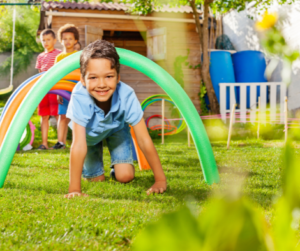 Certain movement patterns that use both sides of the body require that your brain coordinate the left and right sides to work together. This means that a physical activity like crawling requires your brain to engage four areas, and have those areas work in synchronized motion. Crawling on hands and knees means moving your left arm and right leg, then your right arm and left leg in a consistent pattern. The right side of your body is controlled by the left side of your brain. While the left side of the body is controlled by the right side of the brain. Lighting up all that brain matter can help your child’s brain to make connections across the two sides, which can help connect other areas that are not related to just physical activities.
Certain movement patterns that use both sides of the body require that your brain coordinate the left and right sides to work together. This means that a physical activity like crawling requires your brain to engage four areas, and have those areas work in synchronized motion. Crawling on hands and knees means moving your left arm and right leg, then your right arm and left leg in a consistent pattern. The right side of your body is controlled by the left side of your brain. While the left side of the body is controlled by the right side of the brain. Lighting up all that brain matter can help your child’s brain to make connections across the two sides, which can help connect other areas that are not related to just physical activities.
There is a school of thought that children who skip crawling as infants may have various delays that can be helped by teaching them to crawl, even if they can already walk. While I don’t have any proof that it helps, it definitely can’t hurt. So, if your child didn’t crawl much as an infant, or skipped that phase, come up with games to teach them to crawl. Hiding small items on the floor and having them crawl down your hallways to collect them is a great game. We played with simple puzzles that way. I scatter the puzzle pieces down the hall and the child has to crawl to get them all and bring them back to put the puzzle together. You can also encourage your child to pretend to be a cat or dog and crawl around like that animal. Small children are often happy to experiment with being all kinds of animals and making their noises and movements.
Getting Ready
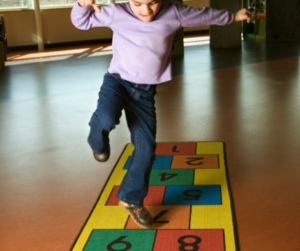 A teacher once told me that children have to be able to skip to learn multiplication. I honestly have no clue if that is true, but I do think that teaching this simple yet complex motion is a great idea! Skipping is on the list of activities that a child is expected to be able to perform by age 6, with some learning as early as 4. It requires a higher level of coordination than just walking. It also requires signals to cross the brain to coordinate using one leg and then the other.
A teacher once told me that children have to be able to skip to learn multiplication. I honestly have no clue if that is true, but I do think that teaching this simple yet complex motion is a great idea! Skipping is on the list of activities that a child is expected to be able to perform by age 6, with some learning as early as 4. It requires a higher level of coordination than just walking. It also requires signals to cross the brain to coordinate using one leg and then the other.
If your child does not know how to skip, here are a few ways to help them learn. I recommend trying all of these in a large area where you can both do the motion in a big circle. If you have multiple kids, they can all play, even if they aren’t all working on this skill, it makes a good physical activity.
Start with breaking down the task into smaller pieces. First, work on hopping on two feet all around the space. Then hopping on one foot. Now try switching feet, hop one and then the other. Next, try that moving forward.
Gallop
If this doesn’t come naturally to your child, have them try galloping. Galloping is when the child puts one foot in front of the other and then hops forward with both of them over and over, keeping the same foot in the front. The motion is sort of like hopping and jogging combined. Was that confusing? Watching a video is helpful. I like this one.
After trying it with the right foot first, be sure to switch and try it with the left leg in front. Gallop around the entire area with one leg in front and then again with the other. Alternating feet while galloping is another step toward skipping. Try alternating every four gallops at first, as alternating is the hard part for most kids.
Skipping
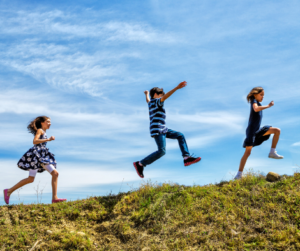 Skipping is a lot like galloping while quickly alternating feet. It also involves swinging the arms, which creates more cross-brain action. After your child has practiced hopping and galloping, moving on to skipping should be easy.
Skipping is a lot like galloping while quickly alternating feet. It also involves swinging the arms, which creates more cross-brain action. After your child has practiced hopping and galloping, moving on to skipping should be easy.
Another way to work on skipping is to work on having your child march with their knees high to their waist while swinging their arms. Point the toes so they land on the balls of their feet when they come down. Then have them try hoping instead of marching. This video has a teacher explaining how she teaches this and why she thinks it helps kids be better athletes.
Throwing
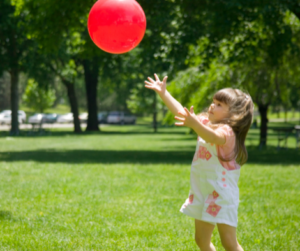 Last, I recommend working with your child on throwing and catching a ball. Throwing and catching with both hands also works on bilateral coordination but in another way. All different styles and types of children’s balls are good, but if your child is not very coordinated, start with something softer or easier than a typical ball. There are many options including ones made of fabric or foam.
Last, I recommend working with your child on throwing and catching a ball. Throwing and catching with both hands also works on bilateral coordination but in another way. All different styles and types of children’s balls are good, but if your child is not very coordinated, start with something softer or easier than a typical ball. There are many options including ones made of fabric or foam.
I like Oballs for kids just learning to throw and catch, as they are easier to grasp than a typical ball. Those balls typically require both hands for catching. Once the child is comfortable catching and throwing an Oball, the child can move on to a playground-style ball.
One of my children struggled a lot with learning to throw and catch smaller items with one hand. We used a Kush ball to work on this skill. They are soft and won’t hurt if the child gets hit with them instead of catching them, and are easier to toss and catch than a regular ball.
While your child may never be an athlete, having these skills can improve their overall strength and coordination. It may improve brain function and help them develop many other skills.
Can your child do these things? What other physical skills do you teach your young children?




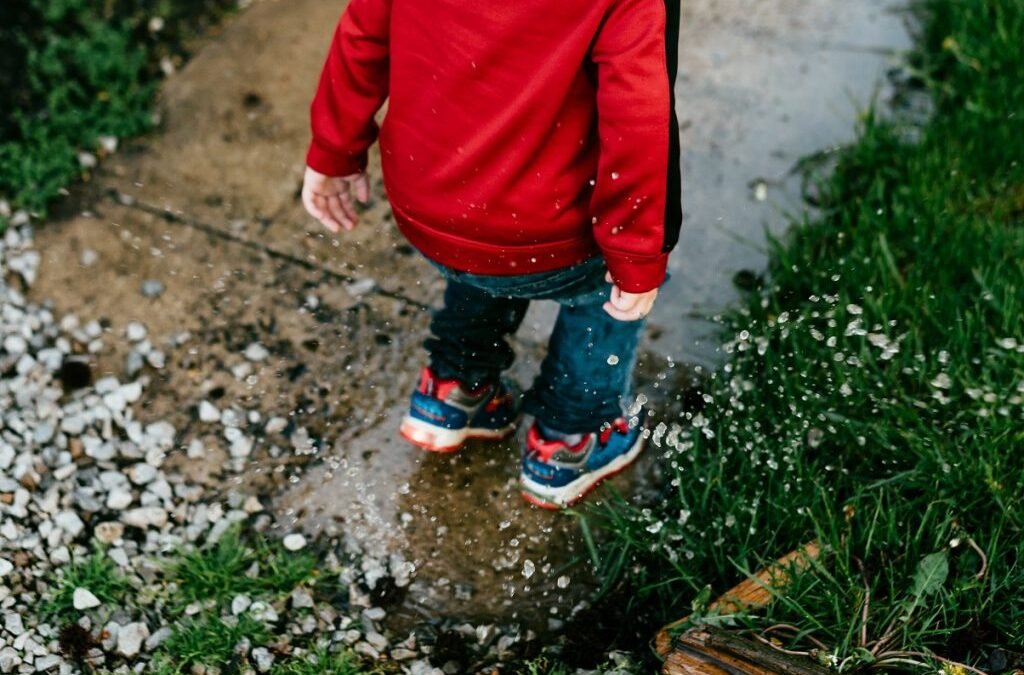
0 Comments